Kyoto's HOTOKI: Experience Pottery With All Five Of Your Senses!

Today we introduce pottery shop HOTOKI, located in a quiet residential area only 20 minutes away from Kyoto Station by subway. This is a place where you can experience pottery by not only buying it, but also by making and using it on the premises.
1. Buy Cups and Containers That Come in Warm Colors!
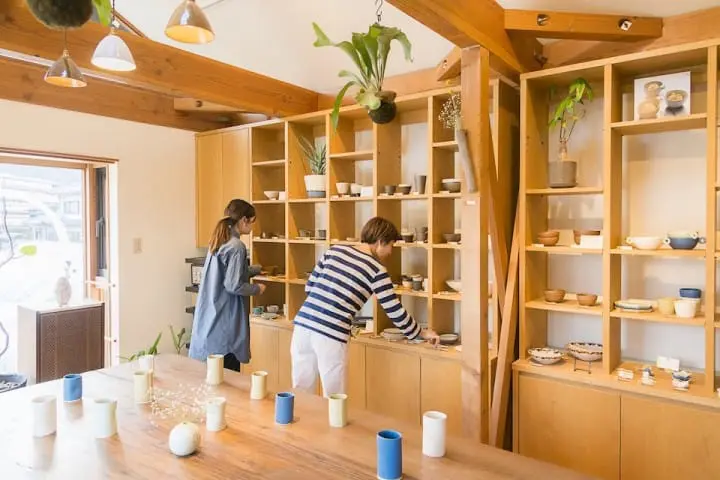
Photo courtesy of: HOTOKI
The sunlight gently comes streaming in, lighting up the shop's interior. Lining the shelves are a variety of pottery goods; original ones made on the shop's premises and also some from their affiliated store called Tokinoha.
The pieces of pottery are carefully made by hand, one by one, by the various craftspeople. It's their hope that the beauty of this pottery will help put a smile on everyone's face as they go about their daily lives.
One of the key points of HOTOKI's pottery is their use of various tools and techniques such as an electric rokuro, or potter's wheel (*1), tebineri, or hand pinching (*2), and tatara, or the slab method (*3).
*1 Electric potter's wheel: a potter's wheel equipped with an electric motor.
*2 Hand pinching: using the thumb and fingers to pinch the clay and mould it into various shapes.
*3 Slab method: working with clay by hand using only simple tools, rather than a potter's wheel. A technique in which clay is rolled out into a thin layer and sliced, pounded with a bar, coiled and twisted into different shapes, and so on.
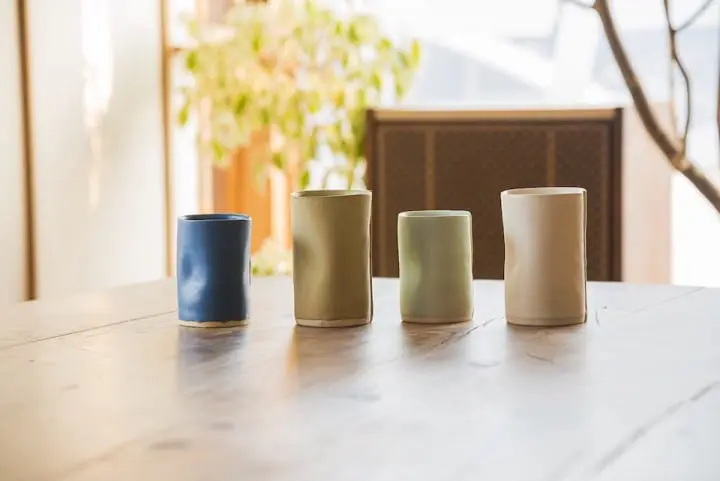
Photo courstesy of: HOTOKI
Among the various works, this writer especially recommends the tatara cup (large: 3240 yen including tax, medium: 2700 yen including tax). These cups are made by Hisashi-san, who is a master with the tatara or slab method of pottery making.
HOTOKI representative Yoji Kiyomizu (Hisashi's son) has incorporated various ideas and the pieces are designed in shapes and colors that make it easy to use in everyday life.
In order to bring out the warmth of pottery, a mixture of different colors are used in a unique fashion. From left to right in the above photo, the four colors of the cups are navy blue, yellow, light blue, and white. These are referred to as the colors of HOTOKI, and the other pieces of pottery such as containers, chopstick rests and so on, also utilize these four colors.
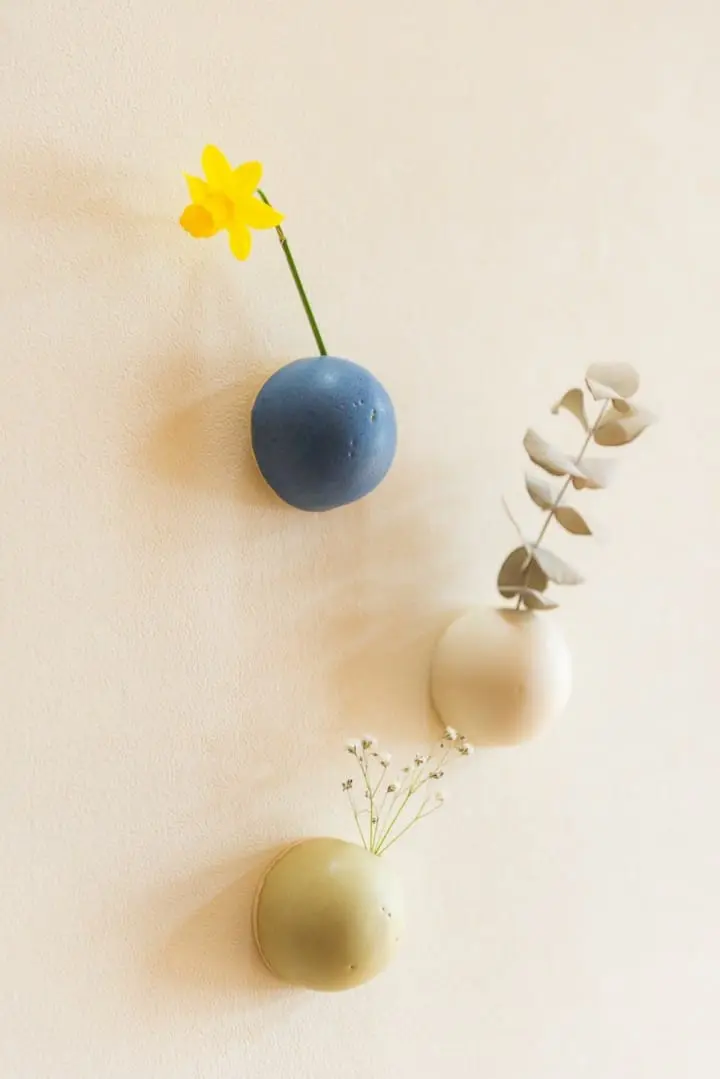
Photo courtesy of: HOTOKI
Take one look at TUKU (2700 yen including tax) in the above photo, and without realizing it you'll feel like decorating your room. All you need is a thumbtack to attach these decorative pieces to your living room wall. They are a handy sized, making them good for souvenirs as well.
Yoji-san said that by coming into contact with the containers, cups, TUKU, and HOTOKI's many other pieces, it's his hope that both the younger generation and people in and outside Japan will feel a sense of connection and affinity towards pottery.
Each and every one of the pieces which are designed to be easily adapted into one's daily life, are a reflection of Yoji-san's above mentioned sentiments.
2. In the Cafe, Choose Which Cup You'd Like to Use!
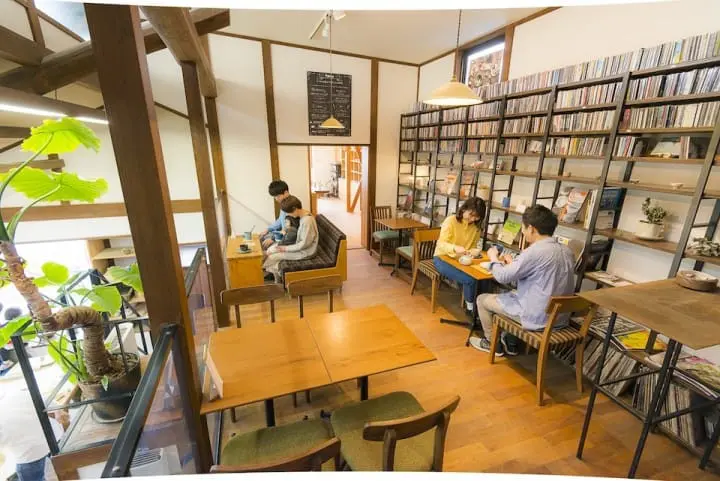
Photo courtesy of: HOTOKI
Right next to the shop is a loft-style cafe that looks down into the work studio. The cup that you chose or the cup you were considering purchasing in the shop, can be used right here in the cafe!
In addition to beverages, you can also enjoy light snacks, cakes, and even alcohol. While gazing down into the studio, this cafe makes the perfect spot for taking a well-deserved break.
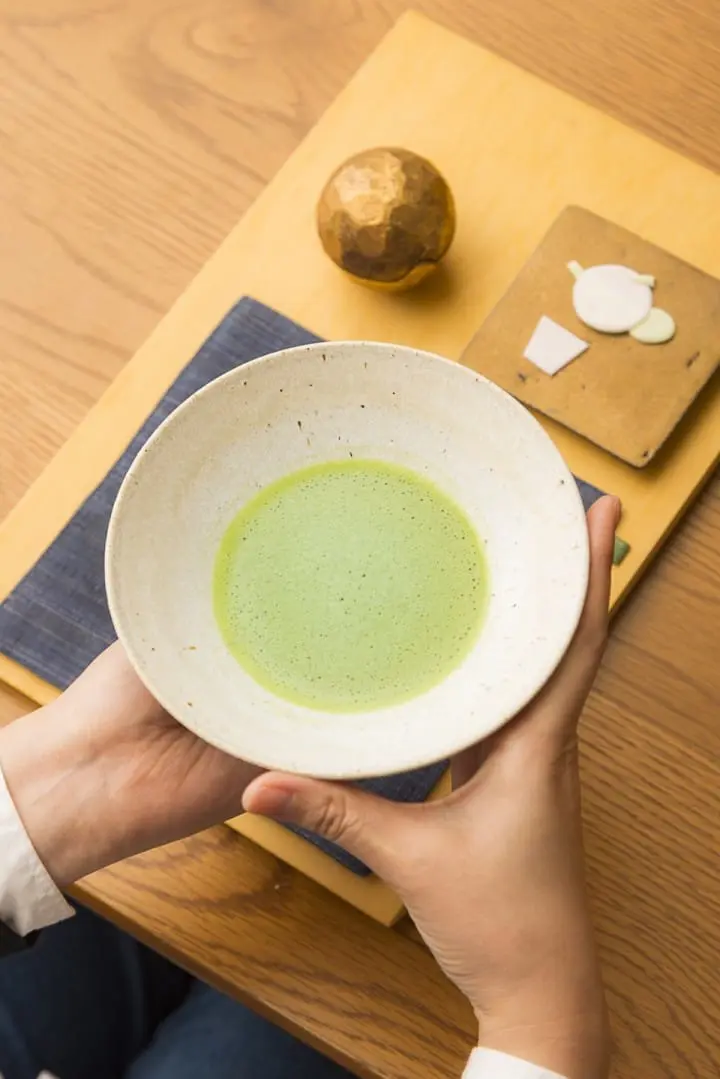
Photo courtesy of: HOTOKI
The recommended menu item is the Matcha set (1080 yen including tax).
This set includes matcha green tea from Ryuoenchaho, a long standing tea store in Kyoto, and wagashi (Japanese sweets) specially made in the shape of a container, from Seiyou, a wagashi sweets store.
It's really special to be able to drink green tea from a pottery tea bowl that was made right on the shop's premises.
3. Join a Class and Make Your Own Original Pottery!
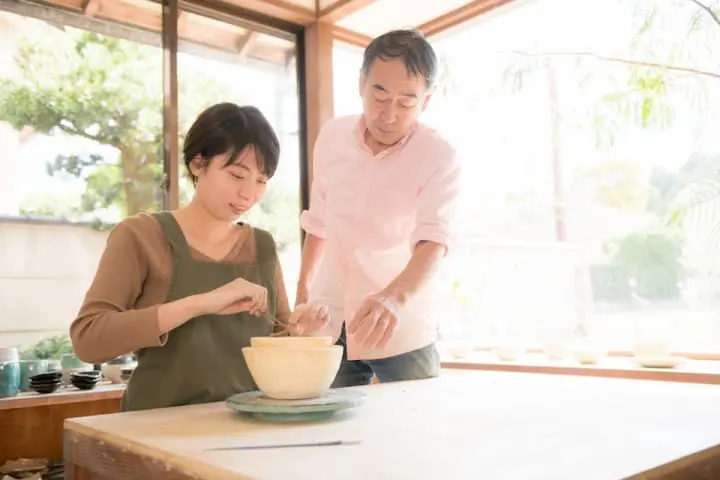
Photo courtesy of: HOTOKI
On the day I visited the shop, I had the pleasure of joining a handmade ceramics course (Potter's Wheel 15 Minute Ceramic Lesson - 2160 yen with tax), one that visitors to Japan can easily try out as well.
Hisashi-san is the teacher for this course. Hisashi-san's grandfather was the pottery and traditional crafts master, Kiyozumi Rokubei V (*4). Let's learn about the timeless traditions of this craft. Still even today, you can find Kiyozumi ceramics on display at HOTOKI.
During the class that's patiently taught by Hisashi-san, participants make ceramics that are not only based on traditional pottery form, but that are also in tune with today's present lifestyle.
A total of three pieces of pottery can be made per participant. If there are any pieces that you particularly like, you can have them baked in the kiln for 1000 yen each (delivery charge is extra). Please note that from the time of baking until the time of delivery, it can take up to one month.
*4 Kiyozumi Rokubei V: the fifth generation of Kiyozumi Rokubei, a name given to the head of the Kyoto-based Kiyozumi family of ceramists.
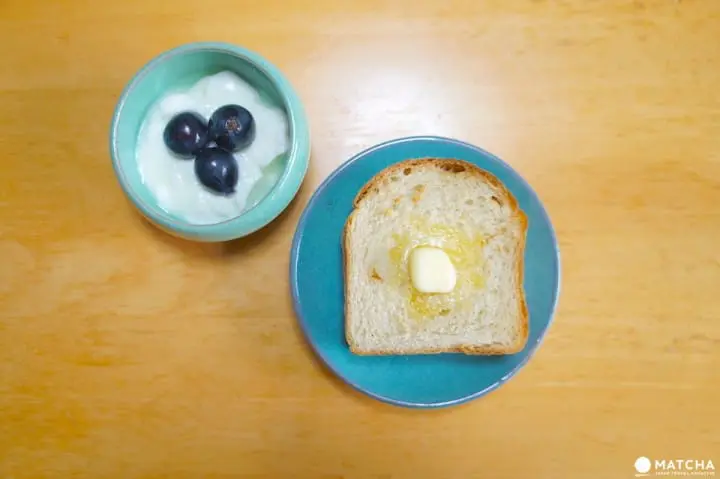
In the photo above, you can see the pottery works that I made during my visit.
One of HOTOKI's special features is that for the ceramic pieces you make, you can choose from a total of five different colors. All five colors are beautiful so you'll undoubtedly have a difficult time making your selection.
Also since your creation was meant to be actually used in your home, even after you go back to your daily life, you'll often be reminded of the fun and satisfying experience you had at HOTOKI.
Though it's possible to join a hands-on class the day you visit, we highly recommend making an advanced reservation by using this contact form. If you fill out the form in simple English they should be able to accommodate your request.
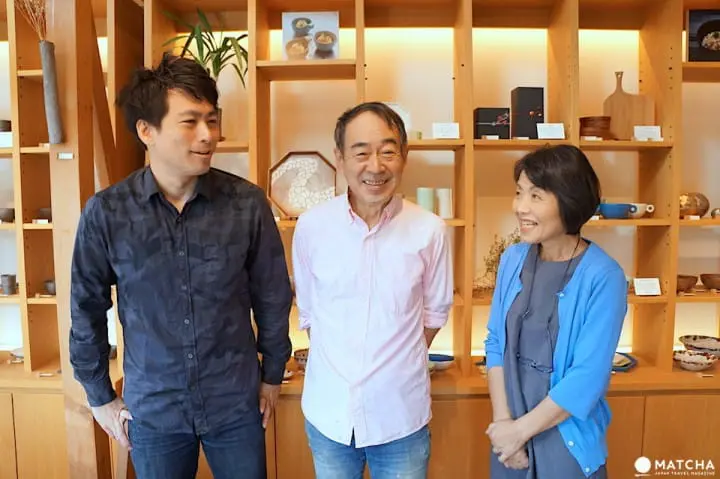
From left to right; HOTOKI representative Yoji-san, pottery craftsperson Hisashi-san, and Hisashi-san's wife Shoko-san.
These are all the members of the Kiyomizu family who manage HOTOKI. When you pay a visit to HOTOKI, you'll be greeted by the same smiles and warm atmosphere that you see in the photo above.
On your next sightseeing trip to Kyoto, how about stopping in for a visit? At HOTOKI you can make your own unique ceramic cup or container, and feel a more intimate sense of connection to the world of pottery.
Interview courtesy of: HOTOKI
*The information in this article is current as of October, 2017.
You May Also Like:
Kyoto Knot Vacation House - Stay At A 100 Year Old Machiya House!
Tea Ceremony En In Kyoto - Experience The World Of Tea Ceremony
Kyoto Complete Guide: Travel Tips, Sightseeing, Festivals And More!
Kyoto / Kameoka 「遠くて近い」を探りながら、肌で感じる面白さを綴っていきたいです。





























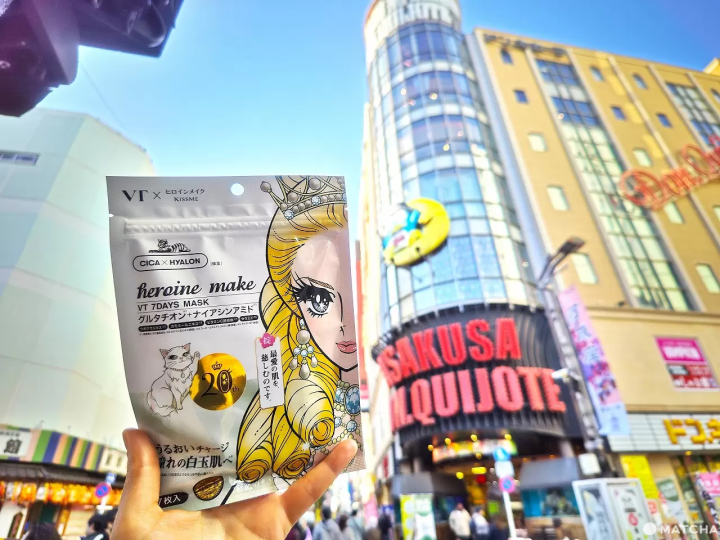
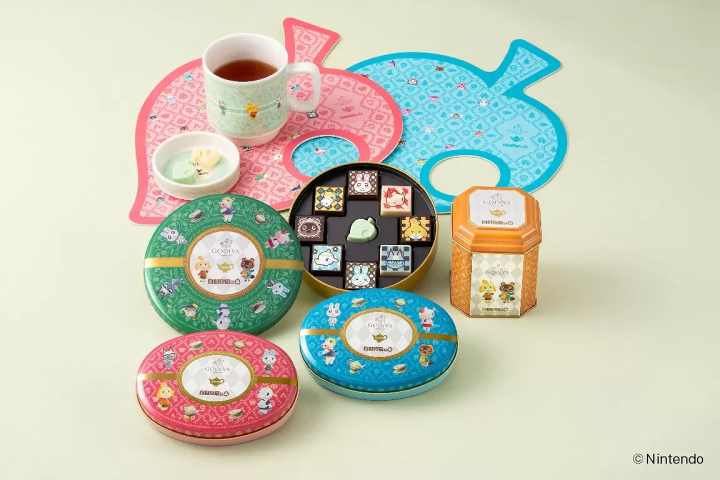
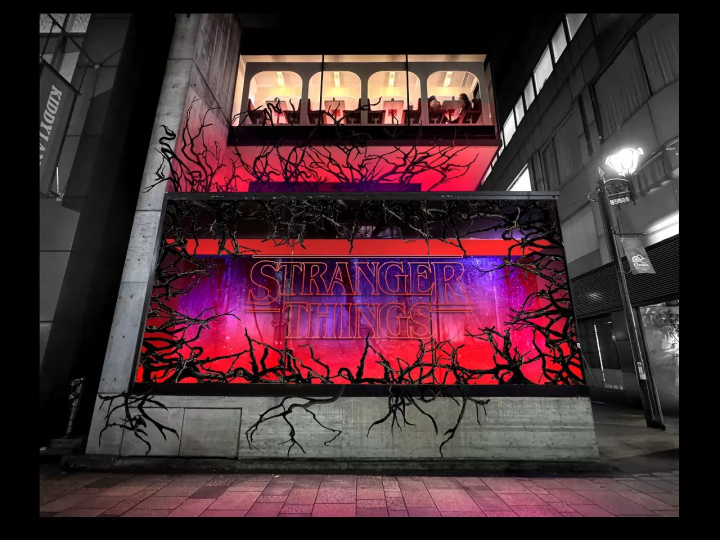
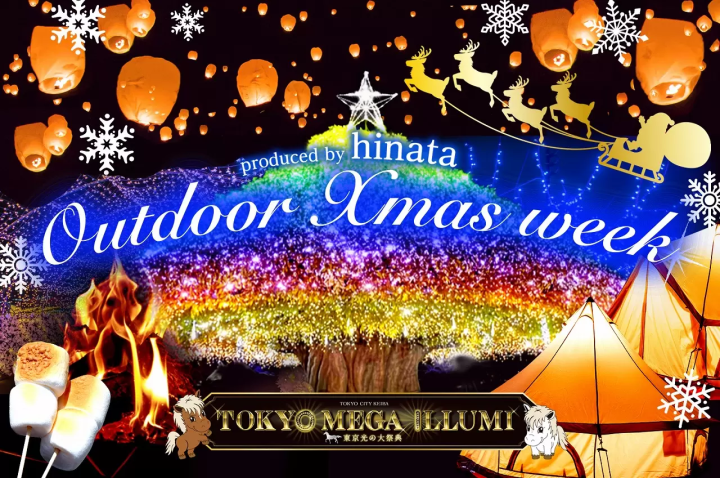





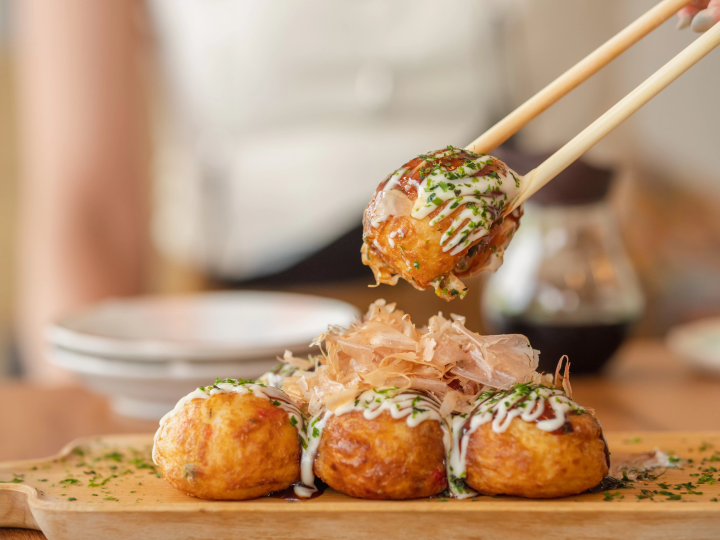
![[2026 Edition] FORMUAL 1 JAPANESE GRAND PRIX Information](https://resources.matcha-jp.com/resize/720x2000/2025/10/05-245984.webp)
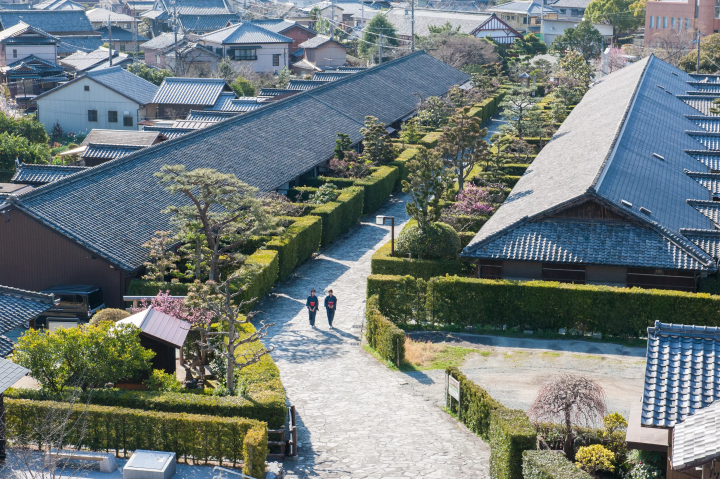

![[2025 Update] Namba's spectacular illuminations! "Namba Hikari Tabi" with approximately 1 million shining lights](https://resources.matcha-jp.com/resize/720x2000/2025/12/12-252825.webp)